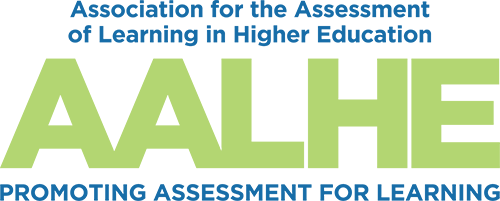- Home
- About AALHE
- Board of Directors
- Committees
- Guiding Documents
- Legal Information
- Organizational Chart
- Our Institutional Partners
- Membership Benefits
- Member Spotlight
- Contact Us
- Member Home
- Symposium
- Annual Conference
- Resources
- Publications
- Donate
EMERGING DIALOGUES IN ASSESSMENTLeveraging Data Visualization to Support Data-Informed Decision-Making May 9, 2025
How can you ensure decision-makers on your campus not only see assessment data but also understand it and use it to drive meaningful action? An effective first step is to promote data visualizations and dashboards that enable decision-makers to quickly understand and act on key findings. Many higher education professionals lack the skills, expertise, and time to create and share data visualizations and dashboards with colleagues and decision-makers. Traditionally, graduate education programs have not incorporated data visualization skills to prepare higher education professionals for assessment, evaluation, and research roles, requiring today's professionals to learn these skills independently. Proper data visualization can convey findings swiftly, enabling stakeholders to concentrate on implementation strategies rather than data interpretation. You likely have encountered requests for data visualizations from campus leaders and others across your institution. For example, your president may request data results on your latest campus belonging survey. Or your senior leadership team may task you with creating an exploratory dashboard displaying the latest NSSE results. So, what do you do now? How do you decide what is the best way to present the data being requested? Do you have a data visualization strategy? Here are three things you can do to anticipate stakeholder data visualization needs. Develop a Strategic Plan for Data VisualizationBefore embarking on data visualization creation, it is crucial to develop a plan outlining the expected content (LinkedIn, n.d.). In Storytelling with Data, Nussbaumer (2015) emphasizes careful planning before creating a visualization, emphasizing that the purpose, audience, and best visual elements are three elements of a good plan. In Data Story, Durate (2019) recommends creating a “data point of view” to plan for visualizations. This is about creating a concise statement about a recommended action based on the visualization. Some individuals sketch or plan on paper or a whiteboard before sharing with stakeholders for feedback. Another strategy is message mapping. The core point is the central message you want to resonate with your audience. Branches are supporting data points and insights. This helps with focusing the message and eliminating clutter, or data points that don’t contribute to the core point. Decide What Questions Need to be AddressedIn order to maximize the usability and impact of a data visualization, it is essential to understand the stakeholders' questions. What assessment questions do they need answered at their institution? Are the answers better suited for a stand-alone report or are they frequently referenced by other stakeholders? If stakeholders want to interact with the data, an interactive data visualization dashboard that allows filtering for specific data categories is beneficial. For example, an interactive data dashboard/interactive fact book is especially helpful for departments/programs/schools to filter data for their specific analytic and reporting needs, such as program review or an accreditation report. If stakeholders have a narrow question focused on one or a few topics, a data story with one figure might be more appropriate than a comprehensive dashboard. What is the Story You are Trying to Tell Using Data?Ensure the information on the visualization is easy to interpret without requiring additional context. Present the data in a way that tells a story. For example, a dashboard displaying a program's enrollment combined with graphs for retention and graduation rates over time can help a user understand the program's overall health from start to finish. Also, make sure any reported findings align with stakeholder questions and are actionable; otherwise, the visualization will be disregarded. A descriptive chart title makes the story more compelling to stakeholders. For example, instead of “Sense of Belonging by Race,” you could title a chart “Disparities in belonging by race point to needed transformations in how we approach well-being, classroom culture, and representation. Review your Visualization for Accuracy, Format, and Appropriateness.Before creating visualizations, you will need to review your dataset for accuracy. Cite the data source and any relevant information about the data that will help the viewer make appropriate interpretations, including how missing data is handled. By integrating these strategies, institutions can foster a culture of data-driven decision-making and continuous improvement.
References Duarte, N. (2019). Data Story: Explain data and inspire action through story. Idea Press. Knaflic, C.N. (2015). Storytelling with data: A data visualization guide for business professionals. Wiley. LinkedIn. (n.d.). How do you create a data visualization plan? https://www.linkedin.com/advice/1/how-do-you-create-data-visualization-plan-skills-data-visualization |

